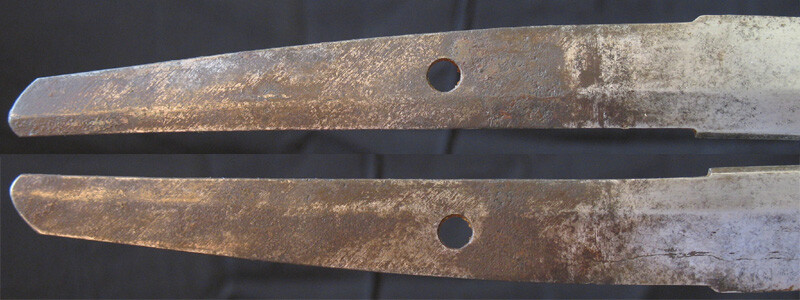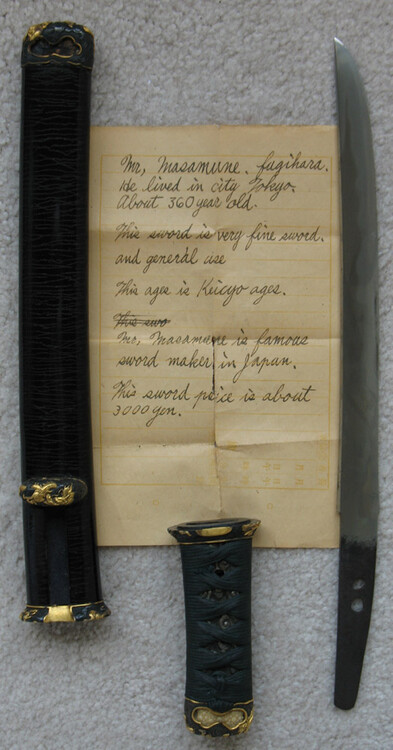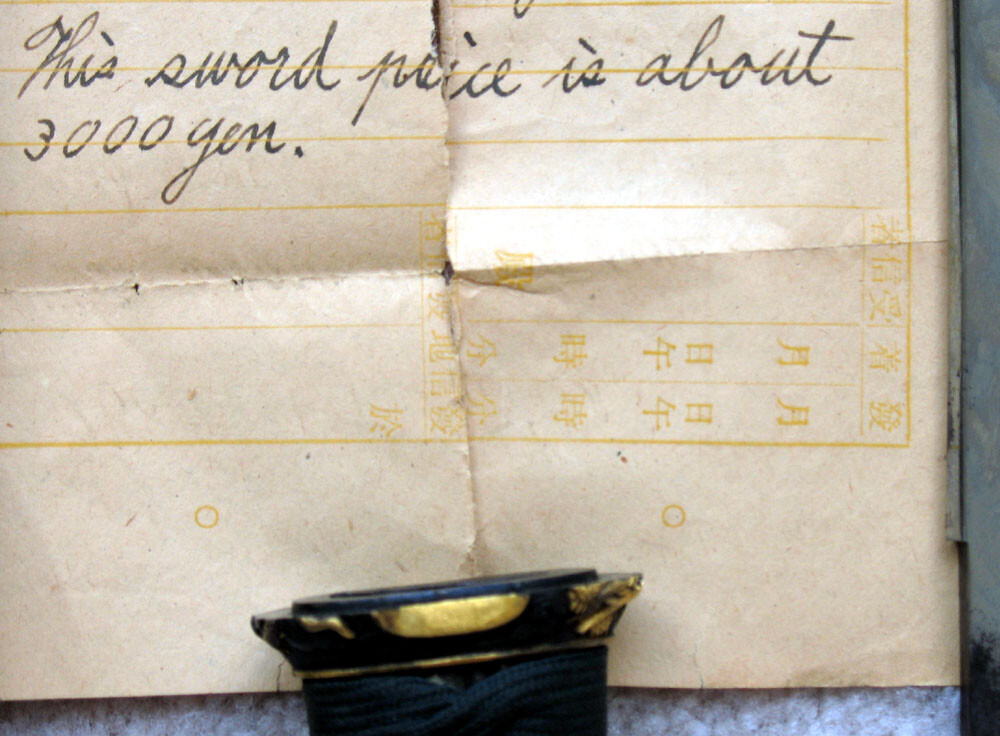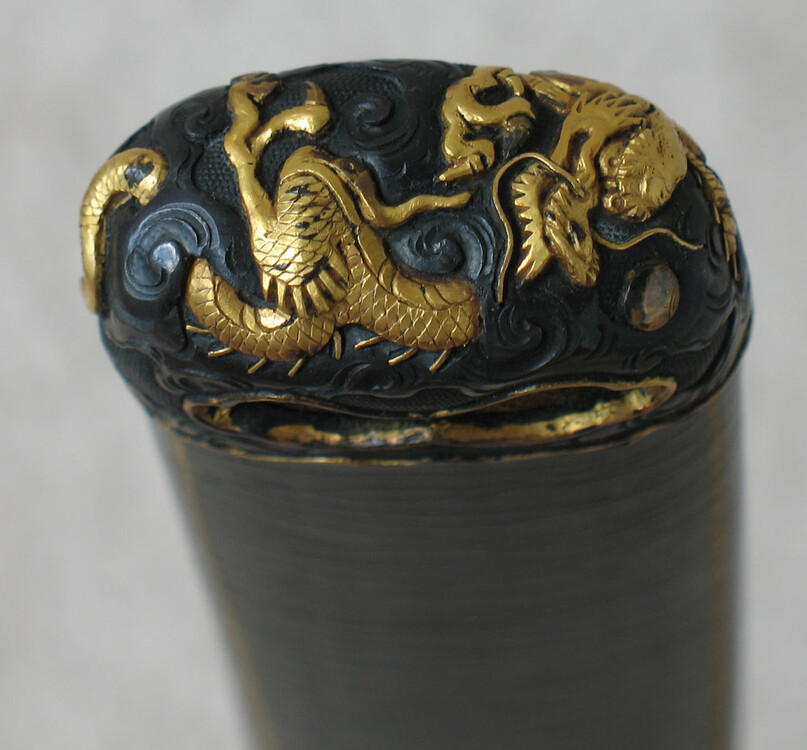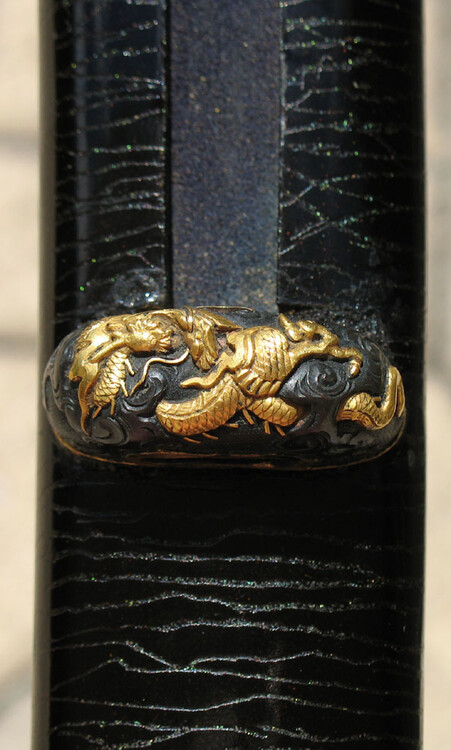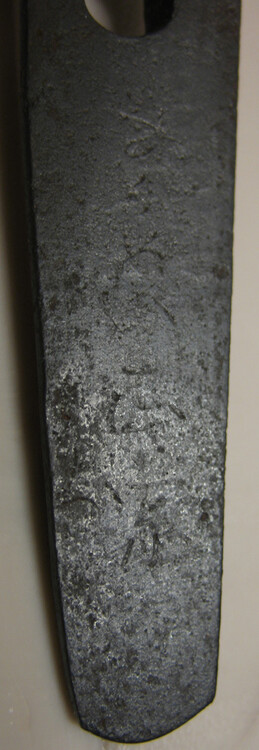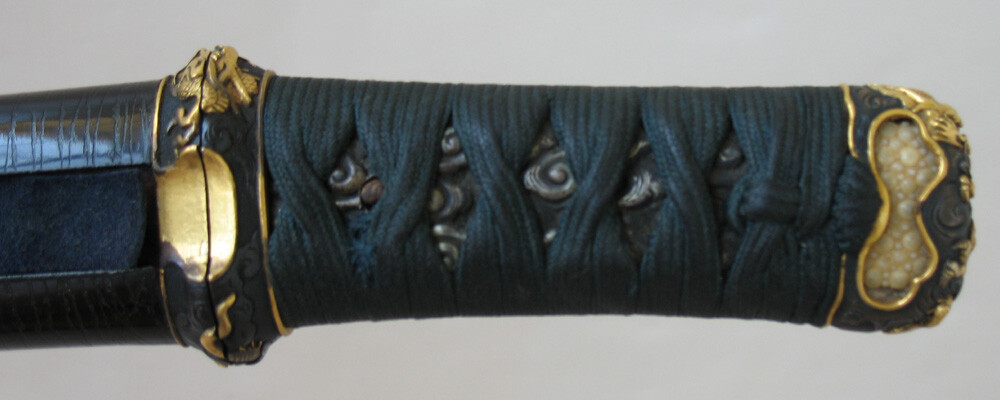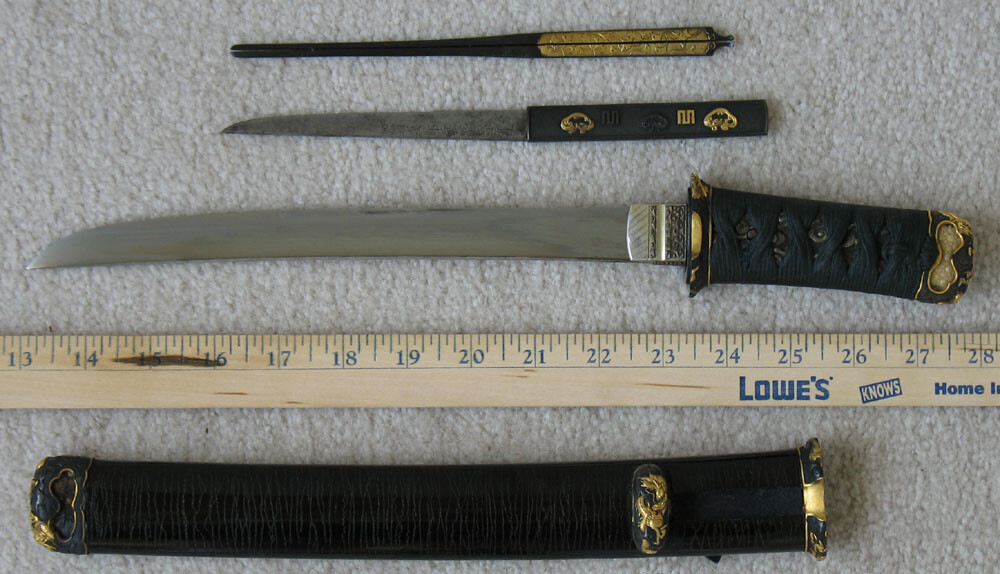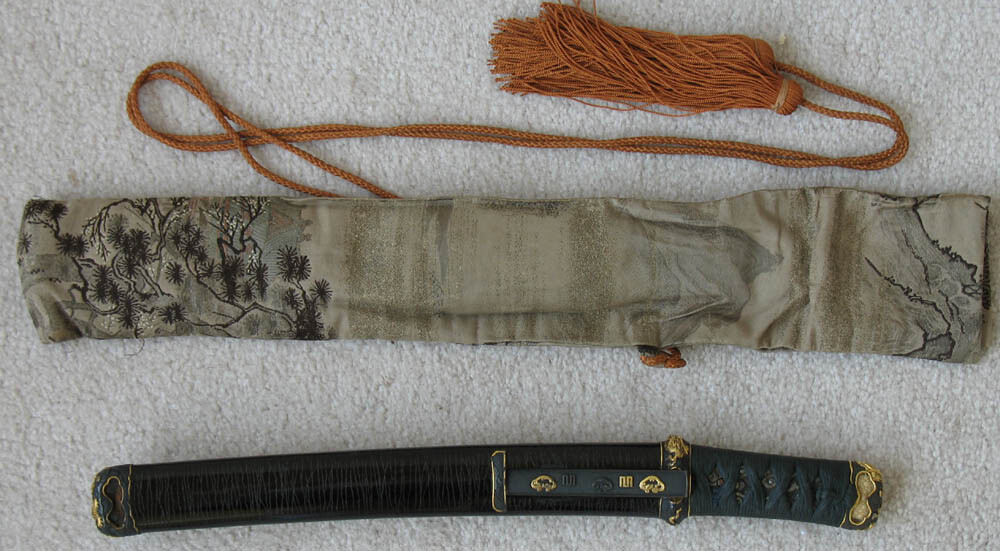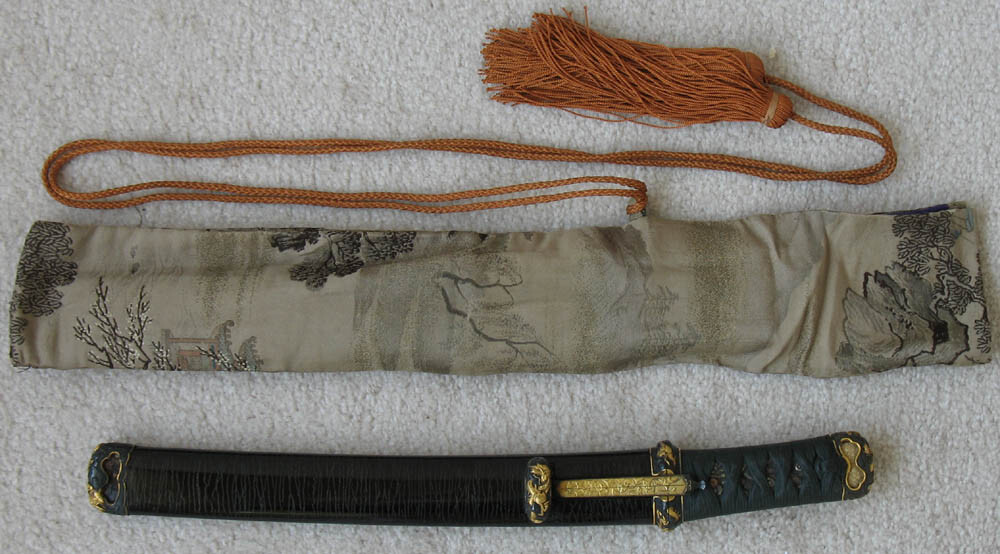
HankB
Members-
Posts
19 -
Joined
-
Last visited
Content Type
Profiles
Forums
Events
Store
Downloads
Gallery
Everything posted by HankB
-
Thank you, Moriyama-san. - Hank B.
-
Gabriel, No problem . . . there's no way I'd expect someone to accurately judge a blade from pictures posted on an Internet forum . . . and serious appraisal would certainly require a "hands on" evaluation. If you take a look at the picture of the note describing the blade (again, I don't know if it's the curator's handwriting or that of a military translator) there's some Japanese printing on the paper itself . . . can anyone provide a translation? As I said, I don't know if its museum stationary or if it came from a Japanese laundry or grocery store . . .but it would be interesting to know what it says.
-
Gabriel, Thank you for the rough guesstimate . . . I understand there's a lot of hand-waving there, but I sort of figured the value would probably fall somwhere in the range you mentioned, and I'm less than a novice at this. Just as a data point, around 12 or 14 years back a guy was advertising "I Buy Swords" in the local newspaper, working out of a local hotel room. I went by with a buddy of mine over my lunch break, more out of curiosity than anything else, just to see what he'd offer me. The guy said the tanto was by "Norimitsu, a nobody smith" (I can't get that name from the mei no matter how I look at it) . . . and offered me $2800 cash right there. My buddy said he had no doubt the guy was low-balling me, as he said when the guy turned around to get a better look under a lamp, his eyes got wide and he was almost drooling. :lol: Even if offered something on the high end of your estimate, the tanto would stay in my family - having inherited it from my dad, it means quite a bit to me.
-
Thanks to everyone for the information they shared . . . my job sometimes takes me up to Minneapolis and/or the Chicago area, so if it's at all possible, I'll time my next trip to coincide with a show & shinsa event there. Now for the big question . . . with the understanding that one can't accurately appraise ANYTHING from a few snapshots . . . would any experienced nihonto buffs venture to estimate - heck, make an off the wall WAG - of the current value of this tanto in today's market? I'm certain the value to me of this tanto exceeds market value, but I can't help but be curious about the values of all three swords my Dad brought back from the war . . . Thanks. - Hank B.
-
kusunokimasahige - thank you, but I haven't removed the leather cover yet . . . .there seems to be something under there, but the cover is very tight, and will probably have to be cut off in order to avoid damaging whatever's underneath. I'm not prepared to do that . . . yet. Jean - reading your posts is educational . . . though I always have to go back to the Japanese sword glossary for a translation! :lol: So what I thought was a shin gunto may date back as far as the 14th century . . . wow . . . quite a difference there. Looks like I'll be looking for a good polisher (I understand there are some hacks out there) and probably looking for a show with shinsa. Funny thing . . . I grew up in Chicago, and then moved to Minnesota (near Minneapolis-St.Paul) for a number of years, and both places have shows with shinsas from time to time . . . now that I'm in Texas . . . nada. Just my luck . . .
-
Per Jean's request, I've taken some measurements off the blade and taken a few more pix. (BTW, it's a good thing there's a "Japanese Sword Glossary" available on line! ) Nagasa: 69.3 cm Kissaki: 3.2 cm Sori: 1.7 cm Sakihaba: 2 cm Motohaba: 3 cm Nakago: 21.3 cm Yasurimi: Faint, but all look to be kiri Nakago sori: 2mm The hamon doesn't show up on the pictures very well (my electronic camera is a cheapie Canon) but comes in about 5-7 mm from the edge; configuration to my inexperienced eye is mostly sugu over the balance of the blade, but it looks like it becomes a little toran around the monouchi. When you view the kissaki picture you'll notice some chips and notches - well, the blade was through at least ONE war that we know of . . . no doubt it was used for its intended purpose. I've higher-res pix if necessary . . . I'm seeking a "best guess" as to this blade's pedigree from someone who knows more than I do about nihonto . . . thank you for looking. Hank B.
-
Hi, Gabriel. You called it, I'm sure my father meant wakizashis were rare on the WWII battlefields - his context was that of a WWII GI. From what I've read, wakizashis were, for a time, the only swords that could be worn by non-samurai, so I'd expect them to be common in the more general scheme of things. As I was looking at the blade I found myself thinking that whoever had this last probably did use "field expedient" polishing techniques, possibly to remove rust, possibly to put an edge on . . . probably some Japanese soldier to whom the blade was more of a simple tool than anything. If these blades could only talk, we might hear some interesting tales . . .
-
And last but not least, a closeup top view of the munemachi . . . not much depth of field here, but it should be adequate to tell someone who knows nihonto something. (I pointedly exclude myself from that category.)
-
This is the third sword my father brought back from PTO in WWII - the only story associated with this blade is that I think I remember my father saying something about short swords not being as common as long swords. Per comments on my previous posts, I've included some measurements on this sword: Nagasa: 42.8 cm Kissaki: 3 cm Sori: 1 cm Sakihaba: 1.8 cm Motohaba: 2.5 cm Nakago: 14.1 cm Yasurimi: faint, but mostly sujikai, with some kiri near the munemachi Nakago sori: ~ 1 mm I have no idea whatsoever as to this blade's pedigree, and would appreciate help in that regard. I've uploaded some images . . . I've got higher-resolution versions available if necessary, but I'm trying not to hog bandwidth too much.
-
Gee . . .thanks to everyone for all the nice comments, both on the tanto and in the related thread I started on a daito. At least SOMEthing is going right this week . . . :D If I don't have to get the blade polished, so much the better. (The only "polishing" I've done is to wipe it down with a clean microfiber cloth . . . I've learned enough here to NOT even THINK about scrubbing it with rubbing compound or even Simichrome . . . on a buffing wheel. ) How does one go about getting a blade and mounts "papered?" (remember I'm less than a novice in this area). A link would be appreciated.
-
This is really becoming an education for me . . . I'm starting to get some faint glimmerings of what I don't know - so it would appear I came to the right place! I guess I need to take more (and better) pictures to show more details on the blade . . . it would appear to be rather better than I thought it was. - Hank B.
-
Here are some close-ups of the tsuba and tsuka . . . would appreciate any information you can share. Thank you for looking. - HankB
-
As I mentioned in my earlier posting on my WWII bringback tanto, I also have some other swords I inherited from my father. There's no particular story with this one, which I've tentatively identified as an ordinary shin-gunto. My father brought back several, and gave away most of them, keeping the "best" for himself. (I sometimes wonder if there were signed blades given away because of some rust or wear, and if today they're being used to dig weeds or something. ) In any case, here are some pictures of the blade - no mei or other markings are visible on the nakago, so I'm guessing it's a mass produced blade. There's wear - after, all it DID go through a WAR - but still, it's in better shape than most I've seen at antique shops and gun shows, so I imagine it has SOME value in today's market . . . but certainly not anything near what it means to me. Please take at look at it and tell me what you think. Thank you - HankB
-
Thanks to all for the kind comments so far. My father kept the tanto oiled - though probably with gun oil rather than choji oil - and I've kept it in my gun safe (which has a couple of cans of silica gel) for a number of years. Now that I think about it, I remember my father telling me that he and a buddy were searching the Japanese general, and his buddy wanted a "big sword." Since my Dad already had a few, he said fine, you take that, and I'll see what else he has. And that's when the tanto was discovered. He knew he got the better end of the deal when he took it out of the pouch . . . and so did his buddy. In one of my initial posts, the image "detail 3" has a close up of the characters on the utility knife - does anyone have a translation? Would a tanto like this have been made for a specific individual? And do the fittings give any indication of who this individual might have been, or his station? (Presumably, it wasn't made for a peasant.) I can't argue with this - in fact, I stated at the outset that since the curator dated it to the late 1500s, it was made hundreds of years too late to be the work of THE Masamune, and I wouldn't represent it otherwise. Me too! - Hank B.
-
And finally, I still have the original note from when my father had the curator look at the tanto in 1945 . . . it's not my Dad's handwriting, so it belongs either to the curator or a military translator. I've included a detail of some Japanese writing printed on the paper - I don't know whether it's museum stationary or if it came from a Japanese laundry. Again, any comments or suggestions would be appreciated. - Hank B.
-
Here I have some close-ups of the mei . . . they're faint, so I've included several pictures with different lighting. (Fortunately, I discovered this site before I did anything foolish . . . such as trying to buff off the corrosion!) - Hank B.
-
My late father fought in the Pacific during WWII, and brought home a number of battlefield trophies, including Japanese battle flags, binoculars, a periscope, a box of tsuba, and three swords - a long sword (probably a shin-gunto), a wakizashi of uncertain pedigree, and a very nice tanto. My father obtained the tanto from a Japanese general who didn't need it any more; while searching him for maps, orders, documents, etc., he discovered this tanto under the general's tunic, wrapped in a nice sheath. When they hit Japan, modern Japanese couldn't/wouldn't translate the characters, so my father went to the curator of a Japanese museum (no idea which one) where, after some study, the man concluded the tanto was made by "Masamune Fugihara" around 360 years earlier (circa 1585). So the date and the surname (?) indicates it's not by THE Masamune, who worked a couple of hundred years earlier. Now that I've inherited these swords, I'd like some help verifying the above - please view the pictures and tell me what you think. All help would be appreciated, as I'm certainly less than a novice when it comes to this. - Hank B.












